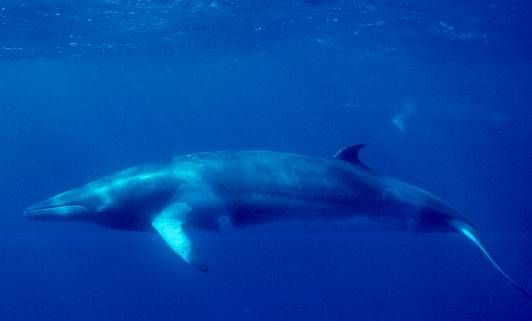Published in the Ocean Watch column, Honolulu Star-Advertiser © Susan Scott
October 20, 2014
Pacific Ocean, 22 degrees South, 163 degrees East » After sailing thousands of miles through the tropical Pacific, I’m no longer surprised by how few whales and dolphins appear offshore. It makes sense because warm water contains fewer nutrients than cold and therefore supports less life.
Even so. Marine mammals do live in and transit these balmy waters, and it’s a bit disappointing to sail offshore year after year and never once see a fin, fluke or blow.
My dry spell is now broken. About a third through our 800-mile passage from New Caledonia to Australia, where the Coral Sea meets the Southern Ocean, Honu had a distinguished visitor.
One day, as I lay in the cockpit looking back, Craig, looking forward, shouted, “Dolphin off the bow! Or maybe it’s a whale.”
We jumped up to see on the surface a classic whale “footprint,” an unmistakable swirl of flat water caused by a large animal’s dive.
As we stood on the deck, a minute later the creature appeared again near the starboard side of the boat. It was clearly a whale, smaller than a humpback or fin but larger than a pilot. The animal’s breath made a gentle whoosh, but no spray came from its blowholes.
While we were still gaping, the black, smooth-skinned back cut the water, this time behind the boat. Moments later the whale appeared on our port side. There was no doubt about it. This marine mammal was circling Honu and checking us out.
I raced to fetch my camera. Too late. Swimming around the boat once had satisfied the creature’s curiosity, and it disappeared in the deep without a trace.
A photo is the only way to be sure of a species, but lacking that, I think I know the identity of our whale because it so precisely fits the description in my books. Our distinguished guest was a minke whale.
-
 Minke Whale
Minke Whale
Public domain photo from NOAA
The minke, pronounced MINK-ee, gets its odd name from the men who once hunted whales. The story goes that a novice whaler, Meincke, shouted out sightings of the little whale at a time the species was considered too small to be worth the effort of harpooning and hauling aboard. The other sailors mockingly gave the species the man’s name.
The minke is the sport model of the baleen whales, being sleek, fast and having a distinctly pointed snout. The species name, acutorostrata, means sharp snout.
At an average of 27 feet long, minkes are also the smallest of their baleen relatives and the most abundant. Like all baleen whales, minkes strain the water for krill and small fish.
Minke whales rarely make a visible blow — check — and usually travel singly throughout every ocean in the world. Yep.
But what finalized my guess of minke is that the species is well known for suddenly, without warning, appearing alongside boats, much to the surprise and delight of the people aboard.
A great big affirmative.
Its curiosity satisfied, the minke then swiftly vanishes. Right. Farewell, sweet whale. Your call meant the world to me.
New Caledonia and Australia each claim to have the longest coral reef in the world. But who cares? I’m just happy to be sailing between them.